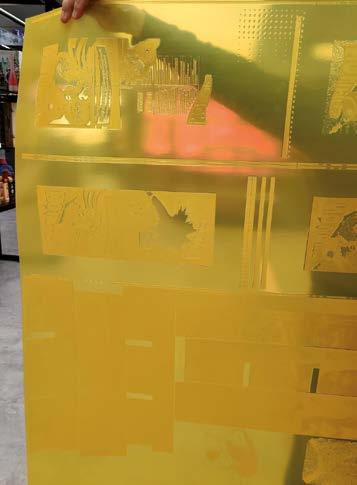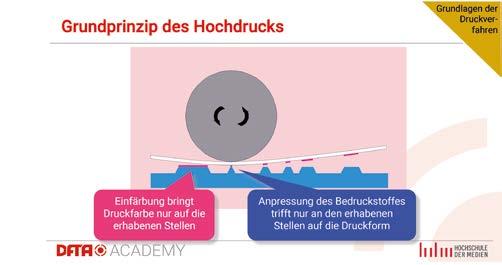
5 minute read
EFFICIENZA IN FLEXO
di attività più elevati? La risposta sta nelle lastre. Migliori processi e prestazioni delle lastre possono ridurre gli scarti, massimizzare ciò che si immette nell’intero processo di produzione e limitare i fermi macchina, con vantaggi lungo l’intera catena del valore. Per uno stampatore, l’eliminazione di un solo fermo-macchina al giorno può far risparmiare tra i 50.000 e i 60.000 € all’anno. Migliori prestazioni sulla macchina da stampa
Beating price pressures with efficient flexo
Advertisement
THE AUTHOR LOOKS AT HOW CURRENT INFLATIONARY PRESSURES BRING PRODUCTIVITY AND RETURN ON INVESTMENT INTO EVER SHARPER FOCUS FOR PREPRESS AND PRINTERS. BUT CAN EFFICIENCY REALLY BALANCE OUT THE PRICE PRESSURES?
Whether brands, converters or prepress houses, players in the printed packaging industry are facing extraordinary and sustained inflationary pressure at the moment.
In the Flexographic Technical Association’s (FTA) flash poll on expectations for 2022, 80% of flexographic converters were most concerned about raw materials costs, with respondents reporting numerous supply chain issues and talk of economic corrections as inflation and rising prices bite. That leaves the flexo community needing to find more ways to cut costs and boost productivity so there’s resilience in the face of price pressures, ideally right across the value chain.
The Market Is Still Growing
One of the key trends identified by judges in the recent Global Flexo Innovation Awards, sponsored by Miraclon, was the wealth of entries documenting conversion to flexo from other processes. This growing demand for flexo has come off the back of decades of process and quality improvements. Consequently the flexographic printing market was valued at USD 107.42 billion in 2020 and is expected to reach USD 124.61 billion by 2026 at a CAGR of possono sia aumentare la libertà di stampa sia eliminare arresti non programmati. Ciò non solo rende ogni lavoro più redditizio, ma permette di stampare più lavori, facendo una differenza significativa per il ROI globale di un’azienda.
Lo stesso vale in prestampa: l’utilizzo del software di automazione, ad esempio, per ottimizzare i layout delle lastre può migliorare drasticamente l’utilizzo delle lastre, riducendo il numero di lastre necessarie. Ciò non solo riduce i costi, ma riduce anche il consumo di energia e l’utilizzo di solventi, contribuendo a raggiungere gli obiettivi di sostenibilità.
L’automazione dei layout delle lastre riduce anche gli errori riducendo al minimo l’intervento umano, fornendo al tempo stesso risultati di stampa uniformi quando le lastre vanno in macchina. Ciò significa che i risparmi si sommano alla riduzione delle chiamate per l’assistenza in loco.
Quindi, anche se i marchi stanno esercitando una pressione crescente sui propri fornitori affinché aderiscano a specifici standard di sostenibilità, trasformatori e service non hanno bisogno di sostenere costi finanziari aggiuntivi se la loro produzione di lastre contribuisce attivamente a ridurre l’impatto ambientale del processo di produzione.
2.44% over the period 2021 - 2026. To deliver these improvements has meant significant investment; in this inflationary market there’s an ever greater need to fully exploit all that investment and innovation in flexo, on every job. With more process control and higher productivity, growth in 2022 was achieved, even if margins are squeezed by cost pressures.
Productive Print And Prepress
In a print operation, every percent of uptime is highly prized. In the FTA poll, 88% of printers and converters put maximizing efficiency at the top of their to-do list. How can that efficiency be realized, and that higher uptime delivered? The answer lies in your plate. Better plate processes and performance can reduce waste, maximize what you put into the whole production process and limit press stops, yielding benefits across the whole value chain. For a printer, eliminating just one press stop a day can save between €50,000€60,000 a year.
Better on-press performance can both increase press latitude and eliminate unscheduled stops. That doesn’t just make each job more profitable, it frees up time on the press for other jobs, making a significant difference to the whole ROI of an operation.
It’s no different earlier in the value chain, in the trade shops. Using automation software, for example, to optimize plate layouts can drastically improve plate utilization, reducing the number of plates needed. This not only cuts cost, but reduces energy consumption and solvent usage, helping to contribute to sustainability targets.
Automating plate layouts also reduces errors by minimizing human intervention, while delivering consistent print results when the supplied plates roll through the press. This means the savings add up in reduced callouts for onsite assistance.
So, even as brands are putting increasing pressure on their suppliers to adhere to specific sustainability standards, converters and trade shops don’t need to absorb
COME L’AUTOMAZIONE SUPPORTA LA PRODUZIONE
Non c’è dubbio che la tecnologia sia al centro della trasformazione flessografica. L’automazione si sta diffondendo sempre più, ma deve essere parte di un sistema efficiente e ottimizzato per essere veramente vantaggiosa.
La tecnologia dovrebbe aggiungere efficienza fin dalla prestampa, che si tratti di avviamenti più veloci o di lastre precise e completamente ottimizzate. Man mano che le macchine da stampa diventano più automatizzate, anche il processo di produzione delle lastre dovrebbe diventare più automatizzato, senza effetti negativi sulle prestazioni della macchina da stampa.
L’automazione della prestampa eseguita correttamente significa lastre che soddisfano la qualità superiore che i marchi si aspettano oggi con meno tempo dedicato alla creazione del layout delle lastre. E con la giusta tecnologia delle lastre, gli stampatori possono godere di tutte le capacità di automazione offerte dagli investimenti in macchine da stampa.
Gran parte dell’efficienza derivante dall’automazione nella creazione del layout delle lastre sta nel risparmio di manodopera. Con la carenza di manodopera, un altro problema presente in tutta la comunità della flessografia, non solo questo massimizza le ore di lavoro del personale per ogni turno, ma aiuta anche i nuovi assunti ad aggiornarsi più velocemente.
Ottenere Il Massimo Dalle Lastre
Nelle condizioni di mercato in cui ci troviamo, dove materiali e processi sono costosi, è essenziale utilizzarli in modo efficiente, dall’utilizzo dell’inchiostro a quello della lastra. Ciò farà la differenza per i profitti nelle aziende e nei service, sia che si misuri disponibilità, prestazioni e qualità per l’efficacia complessiva delle apparecchiature (OEE), o il ROI sulla spesa in conto capitale.
Miraclon si impegna a collaborare con la comunità della flessografia per continuare a guidare l’ottimizzazione delle attrezzature e delle risorse. Questo è il focus su cui sta lavorando il team di ricerca e sviluppo di Miraclon per continuare a innovare il sistema Kodak Flexcel NX. additional financial costs if their platemaking actively contributes to lowering the environmental impact of the production process.
How Automation Supports Production
There’s no doubt that technology is at the center of flexo transformation. Automation is becoming more and more widely used, but it needs to be part of an efficient, optimized system to be truly beneficial. Technology should be adding efficiencies right from prepress, whether it’s faster make-readies or fully optimized, accurate plates. As presses become more automated, the process to create plates should become more automated too, without a negative effect on press performance. Prepress automation done well means plates that meet the higher quality brands expect today with less time spent in plate layout. And with the right plate technology printers can enjoy the full automation capabilities that press investment offers.
Much of the efficiency that comes from automation in plate layout is in labor savings. With labor shortages another operating pressure across the flexo community, not only does this maximize the people hours each shift, it also helps new entrants get up to speed faster.
Getting More From Your Plates
In the market conditions we’re in, where our inputs are expensive, making efficient use of every input is essential, from ink usage to plate utilization. That’ll make a difference to the bottom line in trade shops and press rooms, whether you measure availability, performance and quality for overall equipment effectiveness (OEE), or are interested in what the ROI is on your capital spending.
Miraclon is committed to working with the flexo community to keep driving that equipment and resource maximization. It’s at the core of what R&D team by Miraclon are working on when it comes to innovating within the Kodak Flexcel NX system.

By Helmut Mathes










